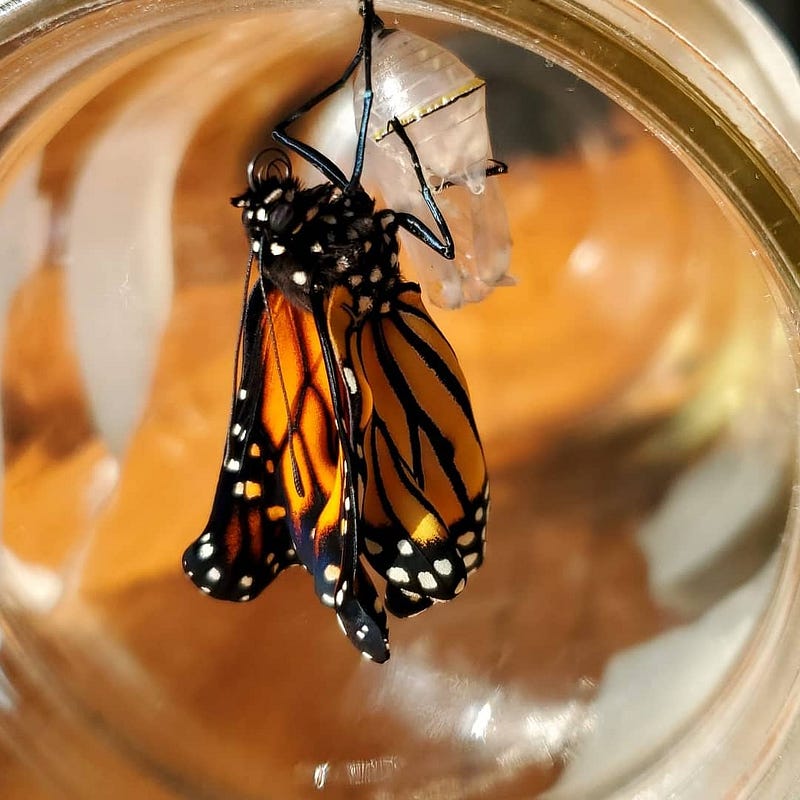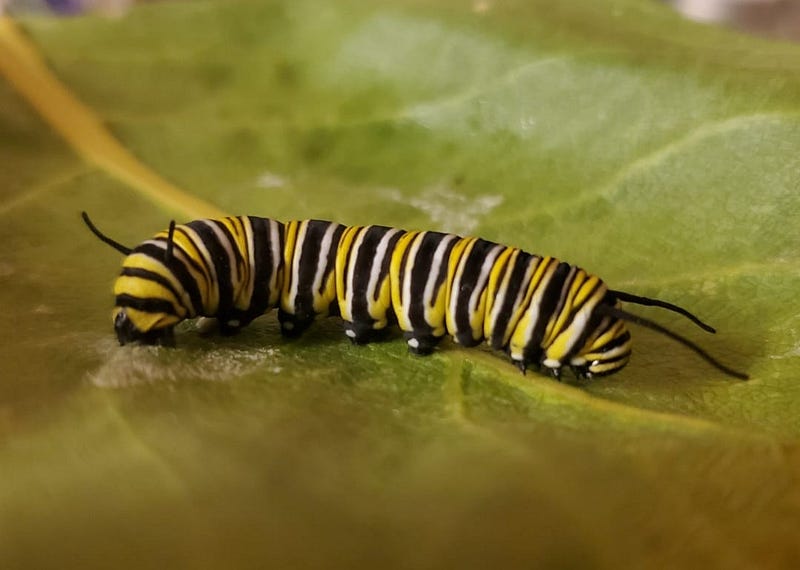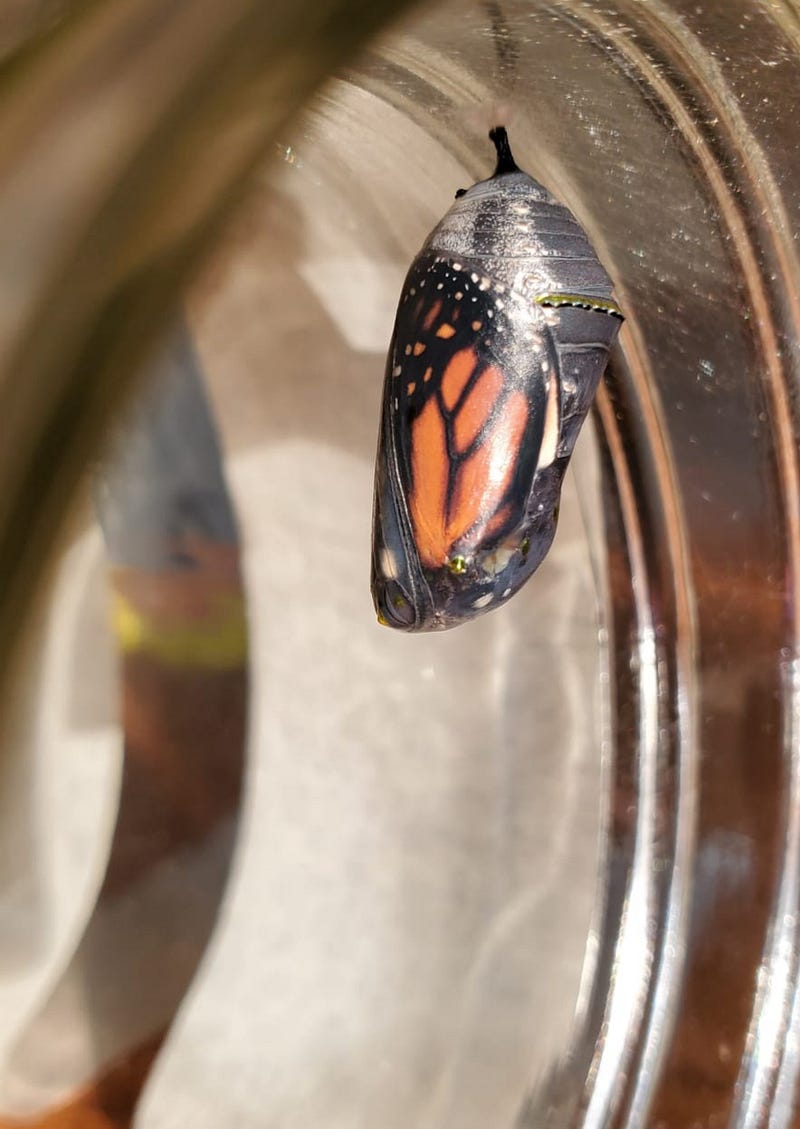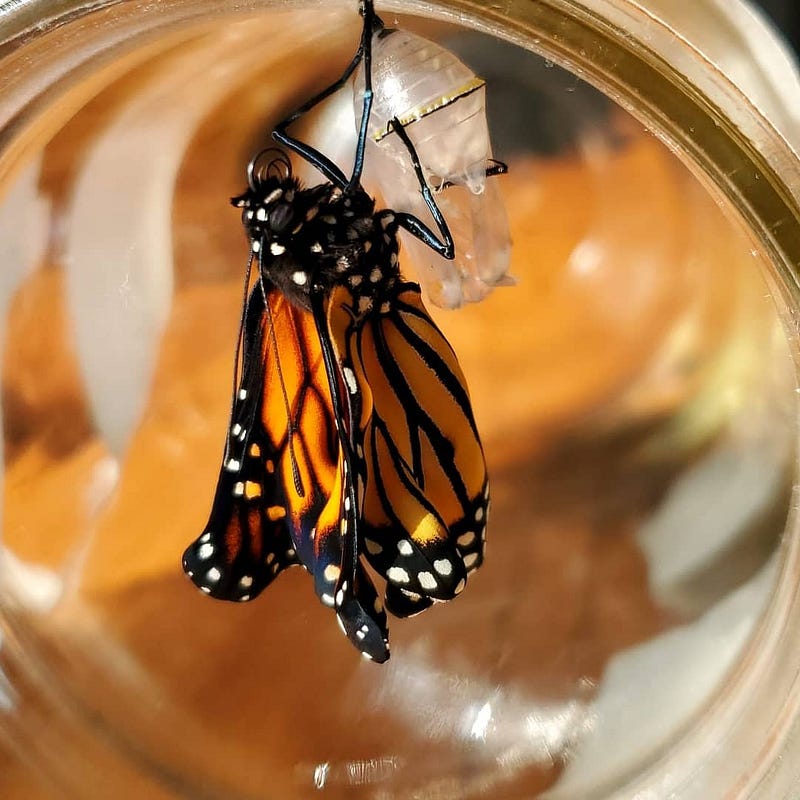The Transformative Journey of Raising Monarch Butterflies
Written on
Chapter 1: The Beginning of a Journey
A few weeks back, my cousin, Luke Rowley, reached out to tell me he had discovered over 35 monarch caterpillars. He wondered if my kids would be interested in raising a few. An enthusiastic “Yes!” came from the back seat of our Tahoe when I shared this with Curtis. Thus began our adventure.
While many are familiar with the butterfly lifecycle, from caterpillar to chrysalis to butterfly, few have the chance to witness this remarkable transformation firsthand. It's truly breathtaking!

As you observe the tiny caterpillar, it begins to grow exponentially, shifting from a barely visible speck to a creature that occupies considerable space. It embodies life in its essence—vibrant and awe-inspiring.
As it develops, its appearance changes dramatically. Initially, it appears almost translucent, but as it matures, it becomes a striking blend of yellow, white, and black. Antennae sprout on its head, and it becomes increasingly plump.
Monarch caterpillars depend solely on milkweed for nourishment. Without a sufficient supply, they face starvation. Thankfully, their exclusive diet deters many predators, as the bitterness of milkweed renders them unpalatable.
As they grow, these caterpillars undergo a molting process, shedding their skin five times. This stage, known as "instar," may leave behind exoskeletons that can often be found in their enclosure—unless they've consumed them.

After 8 to 15 days, the caterpillar enters another transformation. This time, it sheds most of its skin, enveloping itself in a chrysalis, its body now a soup-like mass of liquid. This protective casing allows it to continue metamorphosing.
During this critical phase, the caterpillar essentially dissolves itself from the inside, using the same digestive fluids that processed its milkweed. It is in the midst of a profound change, evolving into what it was destined to be. While this process may take time, the eventual transformation is nothing short of spectacular!

After another 8 to 15 days, the caterpillar undergoes a significant metamorphosis again. Through the now nearly transparent chrysalis, the outlines of its wings become visible. It is on the brink of emerging as a fully developed adult Monarch butterfly, a process that typically occurs overnight.

This image captures the moment just before the butterfly emerges. At birth, it is incredibly vulnerable, with its abdomen swollen with hemolymph—a clear fluid akin to blood. As it exits the chrysalis, it twists and hangs upside down, allowing the hemolymph to circulate and inflate its crumpled wings.
Wet and unable to fly at first, the butterfly must dry off and strengthen its wings before taking flight, a process that can take several hours—providing an excellent opportunity for some memorable photographs.

This is a glimpse of a Monarch just after its emergence. If you could see the other side, you'd notice its swollen abdomen, and its wings are still crumpled from being tightly packed inside the chrysalis.
It clings to the chrysalis shell to fully inflate its wings before embarking on its journey southward, where it will mate and continue the cycle of life.

Here’s our little Monarch, ready for release into the wild. This male butterfly can be identified by the small black dots on its forewings. We set it free from our home in Utah last week.
In two months, it will either find its way to Southern California or Mexico for the winter. Given that this butterfly emerged late in the summer, it’s likely that mating will occur next spring.
Witnessing the metamorphosis of these butterflies resonates deeply with me. I find parallels between their transformation and my own journey, which feels ongoing.
The extraordinary changes in something seemingly insignificant inspire hope within me. I believe there’s potential for me to realize my true self, regardless of being 34 and still searching for direction. My existence can indeed have purpose.
Even amidst my own transformation, I can find meaning. Thank you for reading!
Chapter 2: Learning and Growing
In this chapter, we will explore more about raising Monarchs and the unique experiences that come with it.
The first video provides a comprehensive guide on hatching and raising monarch butterflies, showcasing the beauty of the process.
The second video focuses on outdoor rearing of monarchs, highlighting efforts to assist these magnificent creatures.